 |
 |
 |
| |
Structural Bone Deficits in HIV/HCV,
HCV-Monoinfected, and HIV-Monoinfected Women
|
| |
| |
Reported by Jules Levin
IDSA Oct 8-12 2014, Philadelphia, PA
Vincent Lo Re, MD, MSCE
K Lynn, E Stumm, J Long, MS Nezamzadeh, JF Baker,
A Kapalko, K Mounzer, P Tebas, J Kostman, MB Leonard
Division of Infectious Diseases
Center for Clinical Epidemiology and Biostatistics
University of Pennsylvania
from Jules: this study looked HCV/HIV coinfected, HCV-monoinfected & HIV-monoinfected and also a control group without these infections. These data reinforce bone disease as an extra hepatic manifestation, one of many, reinforcing why delaying HCV treatment causes a variety of health damages in addition to increased risk for liver damage & irreparable liver damage. Look at the data slides below - HCV+ with cirrhosis (f3/F4) appears to have worse bone compared to earlier disease F0-F2. Coinfected women had worse bone looking at several bone measures than both HCV mono- and HIV-mono infected. HIV+ appeared to have worse bone than the uninfected control group. These data reinforce why it is important to treat HCV in HCV/HIV coinfected earlier, as soon as possible. The authors suggest inflammation, progressed liver disease, some ART (not all necessarily) & lifestyle as causes for worse bone in these viral infections, see slide below. These data suggest an increased risk for fractures, it is eel known that fractures in older individuals increase risk for death & severe health decline, when one gets older & more frail it is difficult to recover from a fracture. It is important to check for & continue monitoring bone disease in these patient populations & to check vitamin D and calcium levels. The current treatment for bone disease includes Fosamax & a few additional therapies, but new therapies are in later stage clinical development. It is crucial that older HIV+ individuals receive special care & services to address their increased needs that include both health care like bone disease, heart disease, aging-related issues, as HIV+ are at increased risk for comorbidities & these types of diseases including frailty. But in addition aging older HIV+ will need special services to cope with social & personal issues including depression, isolation, stigma, illicit drug use, loss of income & pension, housing problems etc, as HIV+ are expected to have worse experiences than HIV-neg in these areas. But the federal & state governments have yet to begin coming up with programmatic solutions & support programs. Specialized aging clinics imbedded within HIV clinics & large hospital settings would be very useful where both clinical care & support services could be addressed. There should be an HIV/Aging Liaison in every state & large city who can address programs & community concerns, in NY this could be imbedded in the Mayor's Office & the AIDS Institute.
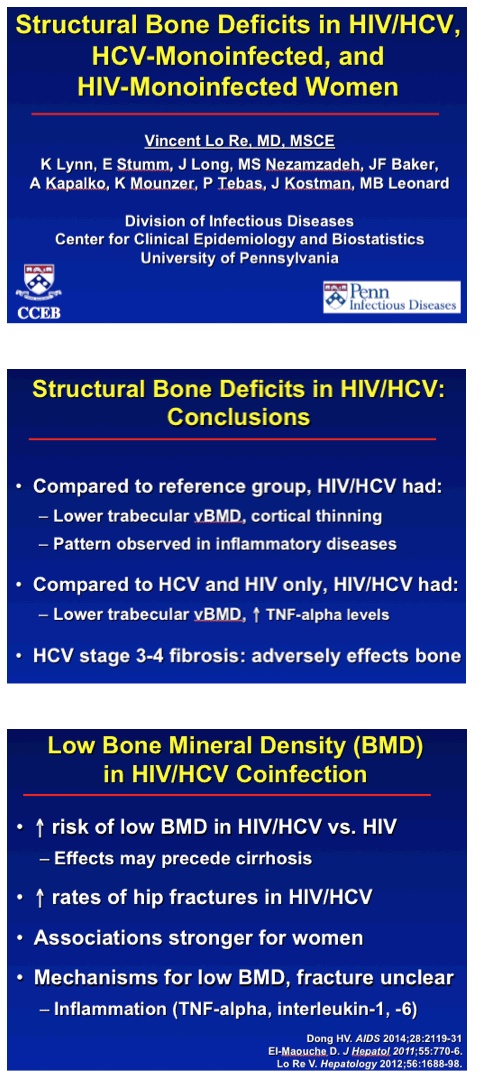
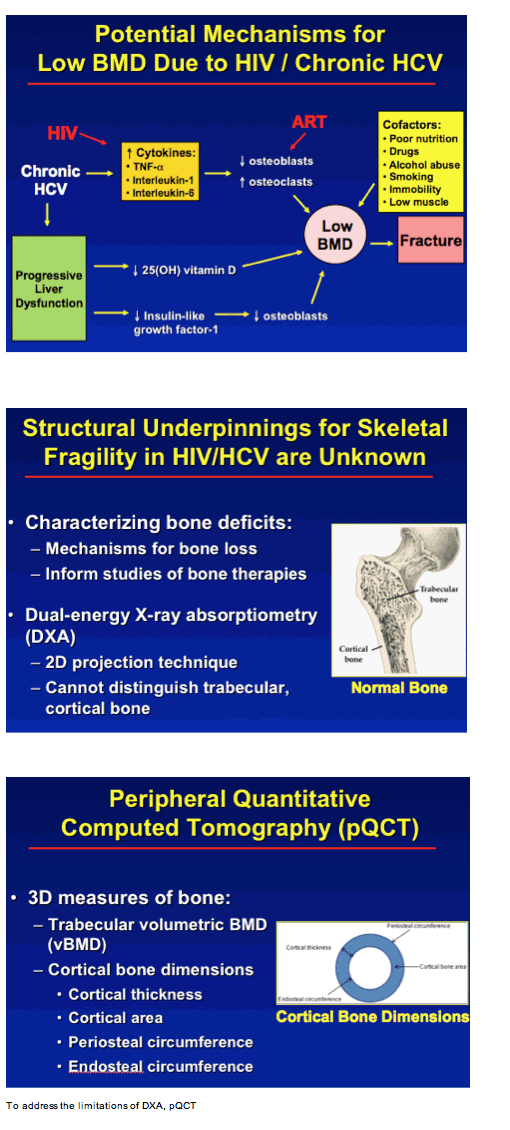
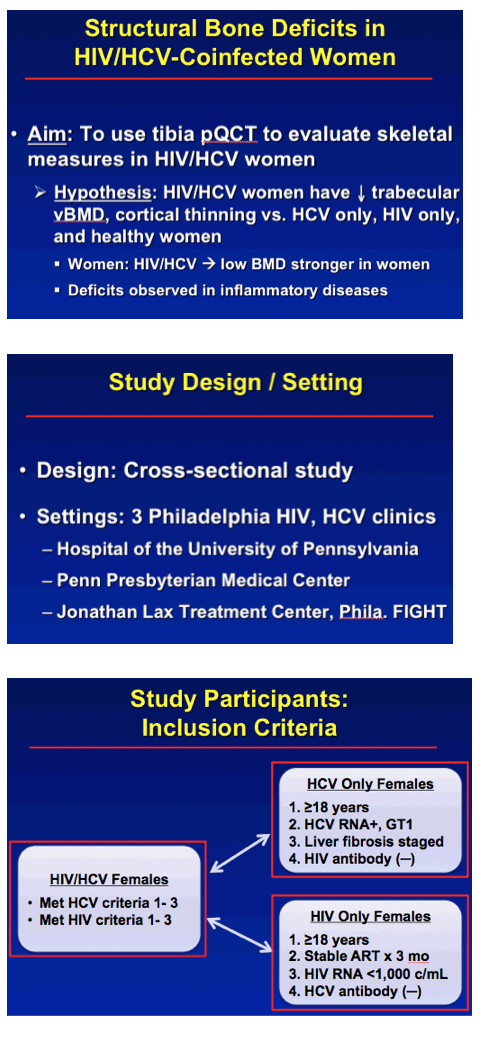

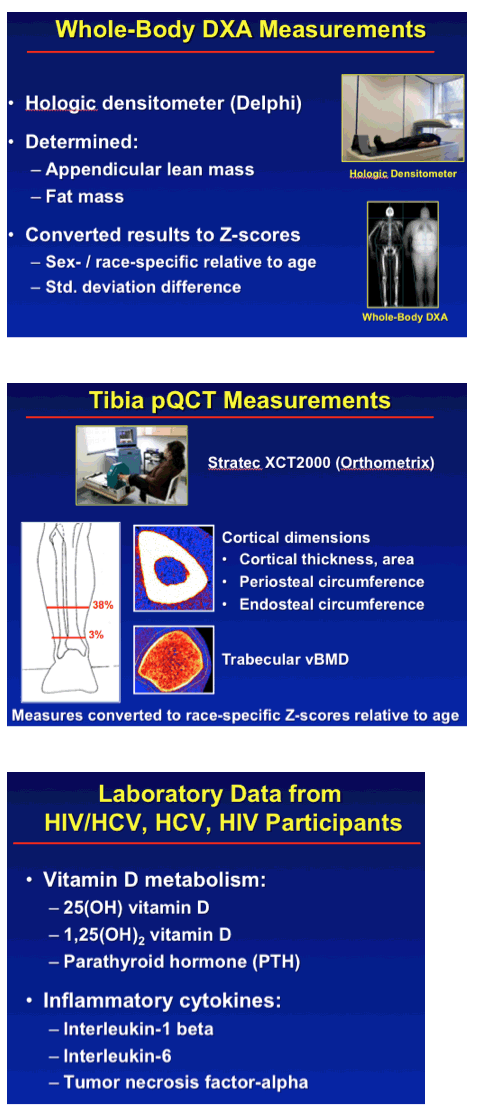
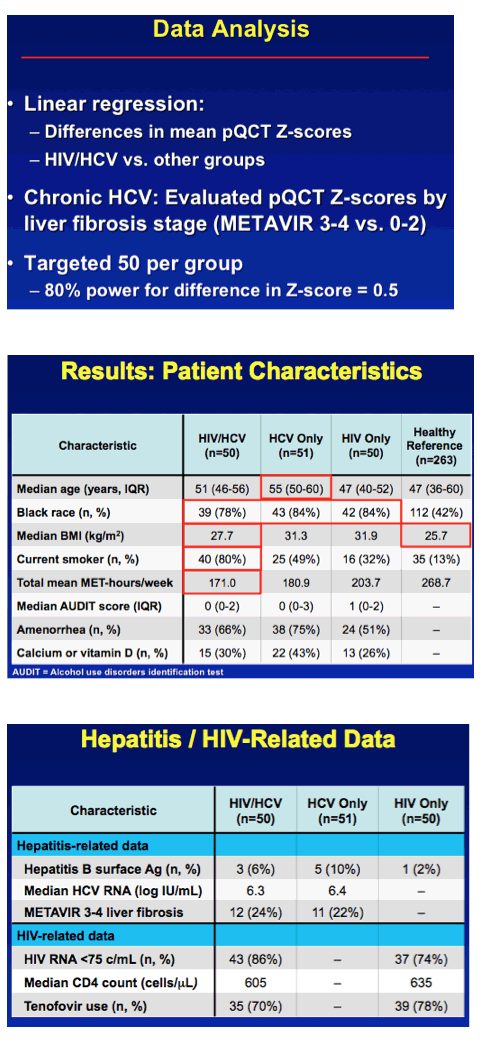
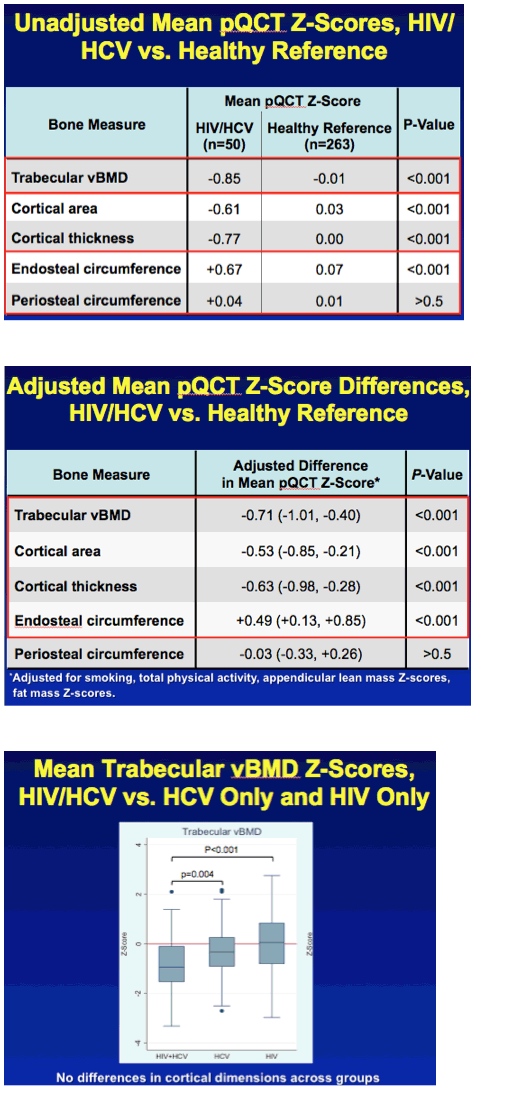
the authors did compare HCV monoinfected and ART-treated HIV monoinfected women to the controls. Those results are attached, though they were not presented. HIV monoinfected women had similar trabecular vBMD but smaller cortical dimensions, specifically cortical thickness and larger endosteal circumference, indicating there was cortical bone thinning
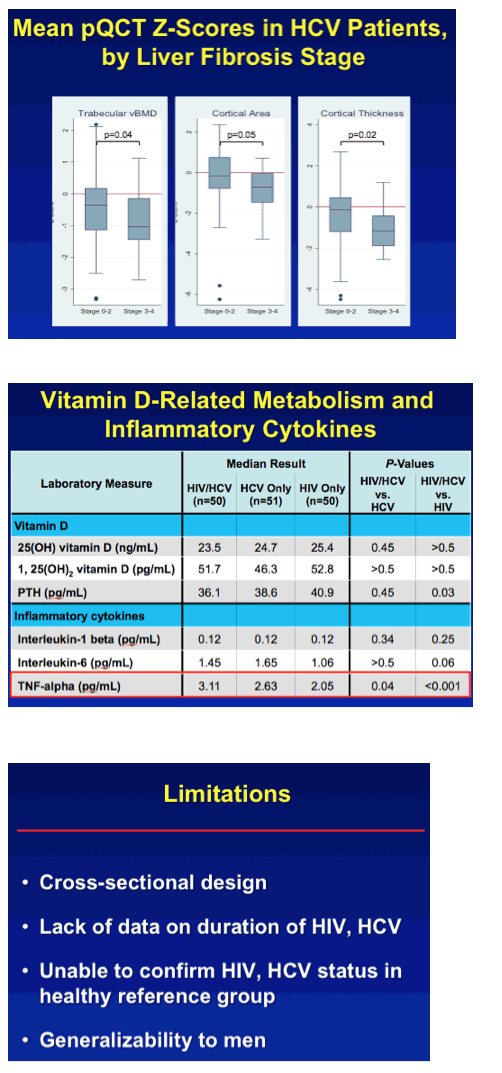
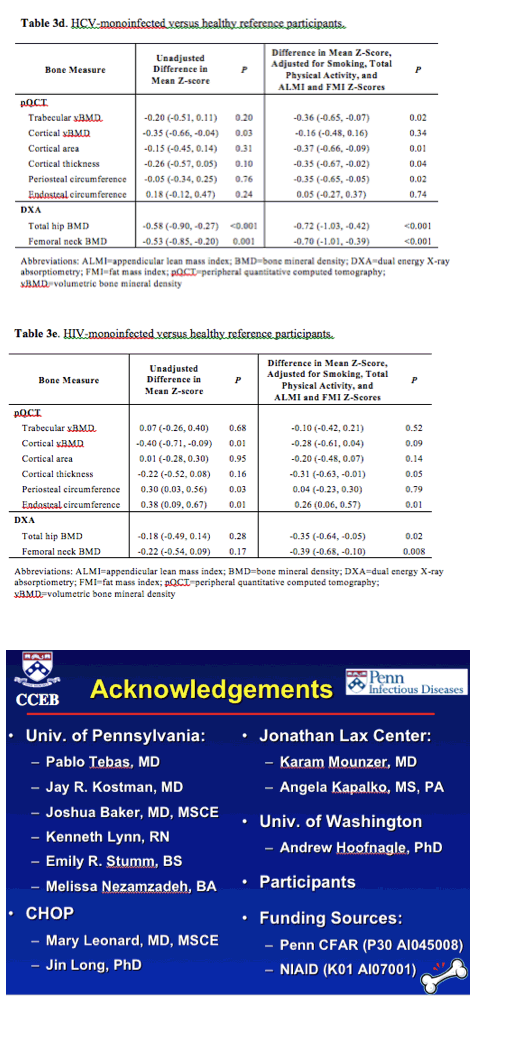
|
| |
|
 |
 |
|
|